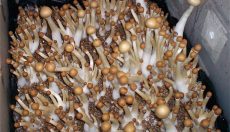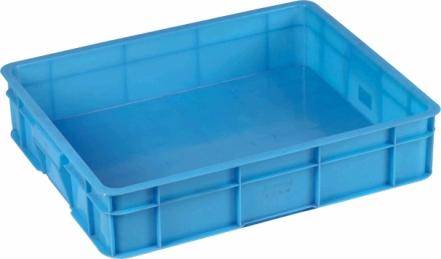Casing technique for magic mushrooms
Posted under: How to's

What is casing technique for magic mushrooms?
"Casing Technique" is a simple method to cultivate all kinds of fungi in large quantities with materials easy to obtain and in a easy way. This type of techniques have been used for centuries to cultivate fungi and mushrooms in bulk. This growing system has the intention to create in a big container the perfect conditions for the growth of these mushrooms.
How does casing technique for magic mushrooms works?
"Casing Technique" is about preparing a great quantity of "soil" for growing fungi in a container with a big surface. We will be call this “land” as substrate. This substrate is not a normal "soil", as you can find in a park. It is a specially prepared compound in order that the fungi grows in the best circumstances, with all the nutrients and the dampness that it needs. It is not complicated at all to prepare it. The process is divided in to major steps
Step 1. To prepare inoculated substrate jars
Step2. To prepare the great container.
You'll need different materials for each step and some for all the process. Make sure you have brown rice flour, vermiculite, water and a big container for your big cultivation.
How do I make substrate jars? Use the PF-TEK method
First thing you need is to prepare a few small cultives of fungi with which later you will prepare to grow in the big casing. You can see this video to get very detailed instructions.
Instruction video: How to Grow mushrooms with... por magicmushroomsshop
Or get the detailed instructions in this magic manual:
These manuals indicate how to make the little substrate cakes you need. You can do all what you want depending on the amount of magic mushrooms you want to get. It's your call!
The final container. The casing method.
IMPORTANT: You must leave the mycellium appear before to follow the next instructions. What is the mycellium? It's the white fluff we refer in the manual above that must cover your substrate jars weeks after the inoculation if the process is well done.
Get a big tray or container where you want the mushrooms to grow an sterilize it with alcohol. Here in the image you can see a good container for your cultivation:

To proceed you need to make more substrate with brown rice flour, vermiculite and water. But this time you can use a big container. Sterilize the soil with steam just like in the first steps. Make sure you sterilize enough soil to cover your big container with at least 5 centimeters. Now it's time to plant the magic.
Take your fully colonized substrate cakes made in the previous steps. Using gloves, gently break each cake into the container. Do not tear them, just try to crumble the cakes. Breaking them in little pieces. Remember to be very gentle. The mycelium will break with the substrate, but will grow together in a later stage.
Cover the bottom of the container with this inoculated substrate as much as possible. Then pour over it the new and not inoculated soil and mix it a little. Remember: gently.
Cover the mixture with a layer of soil of approximately two centimeters of thickness. Check no chunk of the white mycelium stands out and that the mushroom is completely covered with casing soil. Pad the cover of soil, but do not press it too strong.
Leave the container in a dark place at room temperature.
 The cultivation of an user in shroomery.org
The cultivation of an user in shroomery.orgFinal steps
After a few days the mycelium will starts to colonize the substrate. You’ll spot this white fur coming from the soil. If you see other colors than white, then the cake is contaminated. In that case throw the substrate away immediately.It is important that you wash your hands and disinfect the place and the direct environment of the container after do it.
If there is no contamination, wait to the mycelium to colonize as much soil as possible and them move the container to a place with indirect natural light and clean air. In a few days, mushrooms will begin to sprout. Try to maintain the substre slightly humid during this time.
Congratulations: your little ones have grown great and you are a great gardener!


February 28, 2015